Table of contents
The common walnut ( Juglans regia), also known as the Welsch nut or tree nut, is a nut rich in nutrients that can be eaten raw or cooked - preferably in organic quality. 10 walnuts with shells correspond to about 100 g or 50 g of walnut kernels.
Using walnuts in the kitchen:
Walnuts are eaten without their shells, which can make up to half of their weight. Walnut kernels have an intensely nutty, sweet taste. The skins that surround the kernels often taste slightly bitter. Walnuts without their skins are easy to obtain by briefly blanching the nuts without their shells and then peeling off the skin. Walnuts are used whole, ground or in pressed form as walnut oil. The kernels taste wonderful raw and pure, but are also used for cooking and baking.
The nuts are often used in all kinds of baked goods, sweets and desserts such as bread (e.g. fruit-nut bread, carrot-walnut bread), Russian plaits, cookies, brownies, nut corners, biscuits, tarts, ice cream, chocolates and cakes - wonderful with the taste of apples, oranges, pears or coffee. The beetroot cake and banana cake are recommended recipes. The kernels also make an excellent addition to muesli or granola. Date balls containing walnuts make an energy-rich snack.
Walnuts are also a great way to prepare and spice up salty dishes. They can be used to make excellent spreads and sauces, such as walnut pesto, vegan walnut bolognese, walnut and pepper paste, mushroom and walnut spread or pomegranate and walnut sauce with potatoes. They also taste wonderful in soups (e.g. pea and spinach soup), salads (e.g. with beetroot, red cabbage or carrots – also try the raw pumpkin salad with apple and pear), curries (e.g. parsnip and coconut curry) and in red cabbage cooked with apples. Walnuts are a good ingredient in the filling of tortellini, savoy cabbage rolls, stuffed aubergines and stuffed peppers. Ground walnuts mixed with nutritional yeast, salt and possibly other spices make a highly recommended substitute for Parmesan.
When to harvest nuts for nut schnapps? Half-ripe nuts are used for preserving or to make nut liqueur (nut spirit, nut schnapps). This is particularly popular in Italy (Nocino), Serbia, Croatia, Bosnia and Herzegovina (Orahovac).
Recipe for vegan raw ice cream cake with walnuts:
Ingredients: 5 bananas, 100 g dates, 150 ml water, 200 g walnuts (raw, organic), 200 g hazelnuts (ground).
Preparation: The day before, cut the bananas into slices and freeze overnight. The next day, take them out of the freezer so that they can thaw briefly before you start. Puree the dates and water using a blender or hand blender to make date puree. Add 2 tablespoons of date puree to the ground hazelnuts, knead into a sticky dough and press this into the base of a round cake tin. Puree the remaining date puree with the slightly thawed banana slices and walnuts (except for about 10 for decoration) to make a firm ice cream. You can use a little water or plant-based milk to help ensure that the ice cream is not too firm. Spread the mixture on the dough base and decorate with the remaining walnuts. Put the raw food ice cream cake (vegan) in the freezer for about two hours and serve immediately. If you leave the cake in the freezer for longer, you should let it thaw briefly before serving.
Vegan recipes with shelled walnuts can be found under the note: " Recipes that have the most of this ingredient ".
| Not only vegans or vegetarians should read this: Vegans often eat unhealthily. Avoidable nutritional errors. |
Shopping - where to buy walnuts?
Where can you buy walnuts without shells? Walnuts without shells can be bought in most supermarkets (e.g. Coop, Migros, Denner, Volg, Spar, Aldi, Lidl, Rewe, Edeka, Hofer) and organic supermarkets (e.g. Alnatura, Denn's Biomarkt) all year round - often in organic quality. Where can you buy walnuts with shells? In some supermarkets (e.g. Coop, Migros, Aldi, Rewe, Hofer) you can find walnuts with shells. If possible, buy nuts with shells and crack them open when you want to use them. This is the best way to benefit from the valuable nutrients. Ground walnuts are also available in some supermarkets.
Storage:
Due to their high fat content, particularly the omega-3 fatty acids, walnuts tend to combine quickly with oxygen and thus acquire a rancid taste. Therefore, you should use the nuts quickly - especially if you buy the walnuts without the shell - certainly within three months. During this time, you should store them in an airtight container in a dark, cool and dry place. Rely on your sense of smell and taste to make sure that the nuts are still good.
Walnut: Ingredients - Nutritional values - Calories:
The energy content of walnuts without shells (raw) is relatively high and amounts to 654 kcal per 100 g. Walnut kernels are also very high in fat. Of the 65 g of fat per 100 g (93.2% of the daily requirement), 6.1 g are saturated fatty acids. Walnuts have an optimal ratio of 4:1 omega-6 to omega-3 fatty acids (LA:ALA): The content of linoleic acid; LA; 18:2 omega-6 is 38 g/100g, that of alpha-linolenic acid; ALA; 18:3 omega-3 is 9.1 g/100g - thus the highest proportion of omega-3 fatty acids among nuts. Walnuts also have a considerable amount of protein (15 g/100g). They contain 14 g of carbohydrates and 6.7 g of fiber per 100 g. 1
Raw walnuts are extremely rich in manganese. The content of 3.4 mg/100g (171% of the daily value) is comparable to that of amaranth (3.3 mg/100g). However, macadamia nuts (4.1 mg/100g), pecans (4.5 mg/100g) and hazelnuts (6.2 mg/100g) contain even more manganese. 1
100 g of raw walnuts also contain 36 µg of biotin (ex vitamin B7) - that makes up 71% of the daily requirement. Peanuts (34 µg/100g) contain a similar amount. At 62 µg/100g, hazelnuts are even richer in biotin. 1
The raw walnut also contains 0.17 g of the amino acid tryptophan per 100 g (69% of the daily requirement). Hazelnuts (0.19 g/100g) and quinoa (0.17 g/100g) contain a similar amount.Pumpkin seeds contain significantly more at 0.58 g/100g. 1
The complete ingredients of shelled walnuts, the coverage of the daily requirement and comparison values with other ingredients can be found in our nutrient tables. In the article Nutrients explained you will get a detailed insight into the topic.
Health aspects - effects:
Are walnuts healthy? A study with healthy Caucasian subjects in 2014 showed that a diet enriched with walnuts over an eight-week period significantly lowers non-HDL cholesterol and apolipoprotein B. Total cholesterol also shows a trend towards reduction. This may partly explain the epidemiological observation that regular consumption of walnuts reduces the risk of cardiovascular disease. 2,3 Regular consumption of nuts is recommended for people who suffer from heart failure or angina pectoris or are at risk of arteriosclerosis and heart attack. 4
Although the results of a 2012 study failed to show that eating walnuts improved memory, mood, and nonverbal thinking, they did suggest that walnuts promoted improvements in deductive, verbal thinking. 5 The nuts also have antioxidant, anti-inflammatory, and antidiabetic properties and have the potential to fight cancer. 6,7,8
Walnuts, almonds and hazelnuts have a long and successful history in traditional Persian medicine in the prevention and treatment of memory loss and brain antrophy. This positive effect on the brain and its performance is leading researchers to investigate the potential of these nuts as a preventive or even treatment for Alzheimer's disease. 9
Hazards - Intolerances - Side effects:
Like other nuts, tree nuts are susceptible to mould and consequently mycotoxin contamination. Mycotoxins are secondary metabolites derived from fungi. Aflatoxins are one of the most important groups of mycotoxins and are considered genotoxic carcinogens. Nuts are often contaminated with them. Since geographical origin can influence the risk of contamination, in order to protect human health, receiving countries should increase mycotoxin monitoring in nuts originating from countries with a favourable environment for the growth of aflatoxin-producing moulds or which have less stringent regulations. 10,11
Walnuts can cause allergic reactions. According to a 2021 study, cross-reactivity with pollen is one of the main causes of sensitization and allergy to walnuts across Europe. 12
Use as a medicinal plant:
Walnut leaves are used primarily for medicinal purposes. These contain tannins and are therefore particularly useful for treating inflamed mucous membranes. Inflammations in the mouth, gums, throat and eyes, but also inflamed stomach mucous membranes and irritated intestinal mucous membranes in cases of diarrhea are among the areas of application. The medicine is also used to treat various skin diseases such as eczema, acne and frostbite. Powdered leaves are also given to girls with problems with their periods and acne, or walnut leaf decoctions are used as a sitz bath for hemorrhoids. 13
Folk medicine - natural medicine:
Since ancient times, a number of local ethnic groups have used various parts of Juglans regia for a wide range of ailments, including helminthiasis, diarrhea, sinusitis, stomach pain, arthritis, asthma, eczema, skin diseases, diabetes mellitus, anorexia, thyroid dysfunction, cancer and infectious diseases. 6 In the Middle Ages, the plant was considered a remedy for fever, epileptic seizures and witchcraft. In keeping with the doctrine of signatures, tinctures made from the walnut shell were used for scalp disorders and the kernel was used to calm the brain. 14
Occurrence - origin - ecology:
The walnut ( Juglans regia) has been used in human nutrition since ancient times. The walnut tree is native to Central Asia, the western Himalayan chain and Kyrgyzstan. 15 The ancient Romans also cultivated walnut trees and called the tree nut "Jovis Glans" (acorn of Jupiter), from which the genus name Juglans is derived. 14
Today, walnuts are cultivated in southern Europe, East Asia, the USA, western South America and, to a limited extent, in North Africa and Oceania. 14,15 China leads the world production, followed by the USA and Turkey. 14
Breeding these nuts is a relatively new approach. Gene Serr and Harold Forde developed the first successful breeding program at the University of California in 1948. Their goal was to increase yield and quality. 14
Growing in the garden or as a potted plant:
You can grow a walnut tree yourself. There are several propagation methods for this, including propagation by sowing, cuttings or grafting.
Sowing: From September onwards, you can harvest nuts whose fruit walls are black. At the end of February to the beginning of March, plant the walnuts - ideally just the stones without the pulp - in sufficiently large pots with potting soil about 2 cm deep. The pots should be kept moist and covered with cling film and placed outside until they germinate. The plants can be left to grow in the pot for up to two years before being transplanted outdoors. You could also sow the tree nuts directly in the outdoor bed, but you must be aware that transplanting them to another location can be difficult because the plants develop a deep taproot. The walnut trees that grow through sowing are not true to the variety, but often resemble the wild form. It can take up to 20 years before you can harvest tree nuts. 16
Offshoots: In autumn or spring, bend a long, ground-level shoot on an existing walnut tree so that the middle part of the shoot is in the ground - if necessary, this can be secured to the ground with a tent peg or metal hook. The shoot will form roots at this point over the course of the year. In autumn, cut it off below the new roots and plant the plant in the garden. Offshoots produce true-to-type plants with the same genetic makeup and therefore characteristics as the mother plant. 16
Cultivation - Harvest:
Walnut trees grow best in deep, fertile, well-drained soils. High or fluctuating water tables and flooding can damage the roots. Excessively cold temperatures limit the growth of tree nuts. In many regions, walnut growth is limited not by prolonged cold in winter but by autumn and spring frosts. However, growth is also reduced if temperatures are not sufficiently cold in winter. Walnuts require between 700 and 1,000 hours of temperatures below 7 °C. Symptoms of inadequate cooling include sporadic bud break, poor yield and dieback of branches. Too high summer temperatures around 40 °C lead to sunburned and dark-colored kernels, while cool summer temperatures reduce kernel size, resulting in poorly filled nuts. 14
Ecological aspects:
The majority of walnuts come from conventional cultivation. This is problematic for the environment because chemical pesticides are used in cultivation and chemical substances are used in storage (e.g. fumigation with methyl bromide or phosphoric acid esters to prevent infestation with mold and other pests). Organic walnuts do not use such substances. Pressure disinfection (with carbon dioxide) is used to ensure mold- and pest-free storage. In addition, organic nuts are sold unbleached, unlike many walnuts from conventional cultivation. 17
General information:
There are over 20 species in the genus of walnuts ( Juglans), which belong to the walnut family (Juglandaceae). Close relatives of the common walnut ( Juglans regia) are the black walnut ( Juglans nigra) and the butternut ( Juglans cinerea). There are countless varieties of the common walnut.
Alternative names:
Walnut, tree nut / tree nut Walnut - the same thing? Walnut and tree nut are synonyms. They are also often called Welschnuss. Incorrect spellings (eg Walnuss, Wallnus, Wallnüsse, Baumnusse, Baumnüss) creep in.
In English the name for walnuts is walnuts or Persian walnuts.
Key points about walnut use:
The ancient Greeks not only knew about the nutritional properties of the tree nut, but also found other uses for various parts of the nut, such as making dyes for hair and fibers such as wool. 18 At Roman weddings, the groom would throw walnuts as a sign of maturity. 14
The beautiful walnut wood is often used for furnishings such as a walnut table.
Literature - Sources:
Bibliography - 18 Sources
| 1. | USDA United States Department of Agriculture. |
| 2. | Wu L, Piotrowski K, Rau T, Waldmann E, Broedl UC, Demmelmair H, u. a. Walnut-enriched diet reduces fasting non-HDL-cholesterol and apolipoprotein B in healthy Caucasian subjects: a randomized controlled cross-over clinical trial. Metabolism. 2014;63(3):382–91. |
| 3. | Bamberger C, Rossmeier A, Lechner K, Wu L, Waldmann E, Stark RG, u. a. A walnut-enriched diet reduces lipids in healthy caucasian subjects, independent of recommended macronutrient replacement and time point of consumption: a prospective, randomized, controlled trial. Nutrients. 2017;9(10):E1097. |
| 4. | Roger JDP. Heilkräfte der Nahrung. Advent-Verlag: Zürich. 2006: 74-7. |
| 5. | Pribis P, Bailey RN, Russell AA, Kilsby MA, Hernandez M, Craig WJ, u. a. Effects of walnut consumption on cognitive performance in young adults. Br J Nutr. 2012;107(9):1393–401. |
| 6. | Panth N, Paudel KR, Karki R. Phytochemical profile and biological activity of Juglans regia. J Integr Med. 2016;14(5):359–73. |
| 7. | Catanzaro E, Greco G, Potenza L, Calcabrini C, Fimognari C. Natural products to fight cancer: a focus on juglans regia. Toxins (Basel). 2018;10(11):E469. |
| 8. | Rusu ME, Fizesan I, Pop A, Mocan A, Gheldiu A-M, Babota M, u. a. Walnut (Juglans regia L.) septum: assessment of bioactive molecules and in vitro biological effects. Molecules. 2020;25(9):E2187. |
| 9. | Gorji N, Moeini R, Memariani Z. Almond, hazelnut and walnut, three nuts for neuroprotection in Alzheimer’s disease: A neuropharmacological review of their bioactive constituents. Pharmacol Res. 2018;129:115–27. |
| 10. | Diella G, Caggiano G, Ferrieri F, Ventrella A, Palma M, Napoli C, u. a. Aflatoxin contamination in nuts marketed in Italy: preliminary results. Ann Ig. 2018;30(5):401–9. |
| 11. | Habibipour R, Tamandegani PR, Farmany A. Monitoring of aflatoxin G1, B1, G2, and B2 occurrence in some samples of walnut. Environ Monit Assess. 2016;188(12):669. |
| 12. | Lyons SA, Datema MR, Le T-M, Asero R, Barreales L, Belohlavkova S, u. a. Walnut allergy across europe: distribution of allergen sensitization patterns and prediction of severity. J Allergy Clin Immunol Pract. 2021;9(1):225-235.e10. |
| 13. | Pahlow M. Das grosse Buch der Heilpflanzen. Gesund durch die Heilkräfte der Natur. Nikol Verlagsges. mbH: Hamburg; 2013: 330-1. |
| 14. | McGranahan G, Leslie C. Walnut. In: Badenes ML, Byrne DH, Herausgeber. Fruit Breeding. Boston, MA: Springer US;2012:827–46. |
| 15. | Martínez ML, Labuckas DO, Lamarque AL, Maestri DM. Walnut (Juglans regia L.): genetic resources, chemistry, by-products. J Sci Food Agric. 2010;90:1959–1967. |
| 16. | Mein-schoener-garten.de So ziehen Sie einen Walnussbaum selbst heran. |
| 17. | Pini U. Das Bio-Food Handbuch. Ullmann Verlag: Potsdam; 2014: 801-2. |
| 18. | Hayes D, Angove MJ, Tucci J, Dennis C. Walnuts (Juglans regia) chemical composition and research in human health. Crit Rev Food Sci Nutr. 2016;56(8):1231–41. |

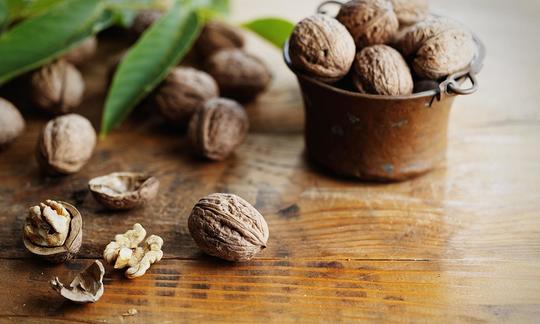

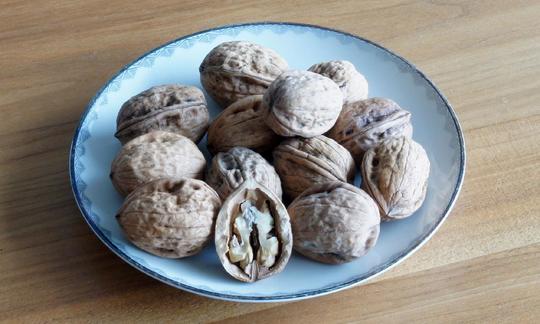

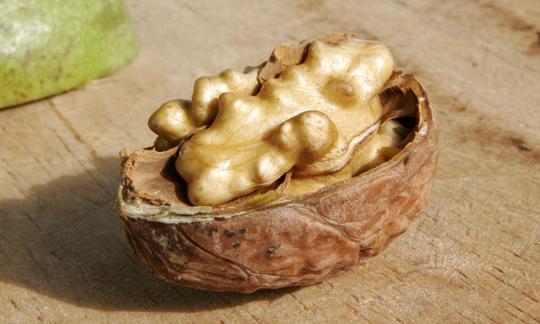

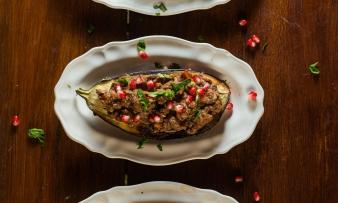
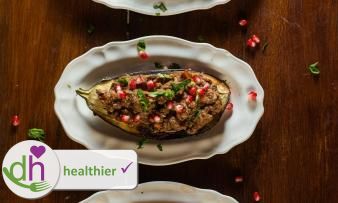
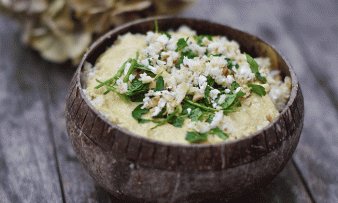





Comments